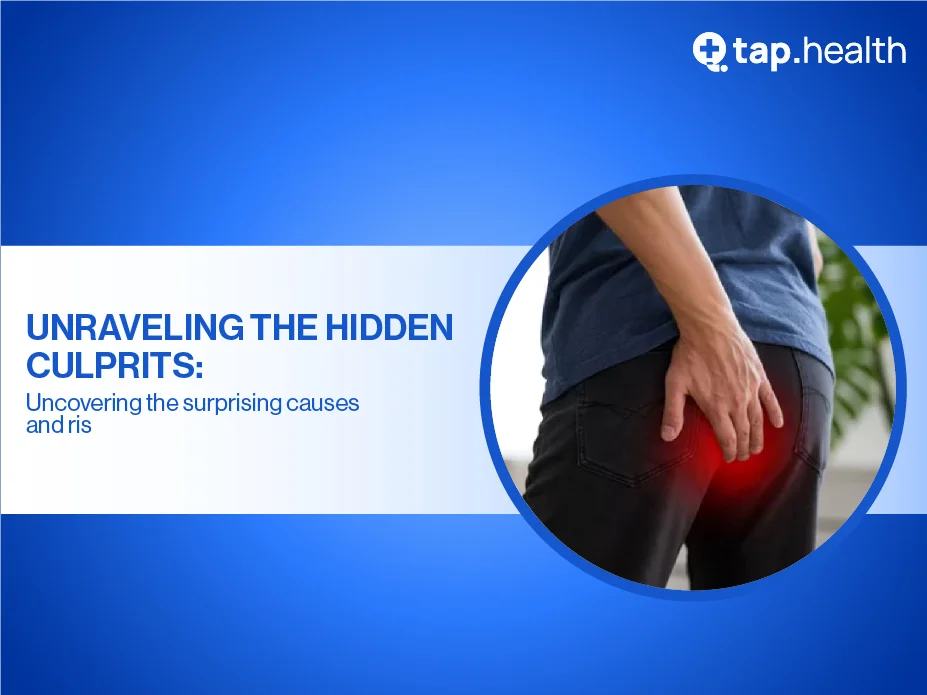Piles, medically known as hemorrhoids, are a common yet often misunderstood condition affecting millions worldwide. Characterized by swollen blood vessels in the rectal or anal area, piles can cause discomfort, pain, and inconvenience. Understanding the causes, recognizing early symptoms, and adopting preventive measures are key to managing this condition effectively. This blog provides a comprehensive overview of piles, including their causes, risk factors, symptoms, diagnosis, treatment options, and long-term management strategies.
What Are Piles and How Common Are They?
Defining Piles (Hemorrhoids)
Piles are swollen or inflamed blood vessels in the anal canal or rectum, known as hemorrhoids. These veins help regulate bowel movements, but when they become engorged, they lead to discomfort or pain. Piles are classified into two types:
- Internal Piles: Located inside the rectum, often painless but may cause bleeding during bowel movements.
- External Piles: Form around the anus, typically painful due to nerve endings in the area.
Prevalence of Piles
Piles affect approximately 50% of people over 50, though they can occur at any age. Factors like pregnancy, obesity, or a sedentary lifestyle increase the risk. Younger individuals with a family history of piles are also susceptible, emphasizing the importance of early awareness and lifestyle adjustments.
What Are the Early Signs and Symptoms of Piles?
Recognizing Early Symptoms
Early detection of piles can prevent worsening of the condition. Common early signs include:
- Anal itching: Persistent irritation around the anus.
- Discomfort: A feeling of unease during bowel movements.
- Slight bleeding: Small amounts of blood on toilet paper or in the stool.
Ignoring these symptoms can lead to progression, so seeking medical advice early is crucial for effective management.
Progression of Symptoms
If untreated, piles can worsen, leading to:
- Increased pain and swelling.
- More noticeable bleeding during bowel movements.
- Development of painful external hemorrhoids.
Monitoring symptom changes and consulting a healthcare provider promptly can prevent complications.
What Causes Piles and Who Is at Risk?
Common Causes of Piles
Piles develop due to increased pressure on rectal blood vessels. Key causes include:
- Straining during bowel movements: Often due to constipation.
- Chronic constipation or diarrhea: Disrupts normal bowel function.
- Prolonged sitting or standing: Increases pressure in the rectal area.
- Low-fiber diet: Leads to hard stools, increasing strain.
- Heavy lifting: Adds pressure to the pelvic region.
Lifestyle factors, such as lack of exercise or poor hydration, can exacerbate these issues, making preventive measures essential.
High-Risk Groups
Certain individuals are more prone to developing piles, including:
- Pregnant women: Hormonal changes and increased pelvic pressure heighten risk.
- Overweight or obese individuals: Excess weight strains rectal veins.
- Older adults: Weakened rectal tissues increase susceptibility.
- People with a family history: Genetic predisposition plays a role.
- Those with sedentary jobs or heavy lifting: Prolonged pressure on the rectal area.
Medical conditions like chronic liver disease or inflammatory bowel disease also elevate the risk by affecting digestive health.
How Are Piles Diagnosed?
Diagnostic Procedures
Accurate diagnosis of piles involves:
- Physical examination: A doctor assesses the anal area for swelling or abnormalities.
- Medical history review: Understanding symptoms and risk factors.
- Digital rectal examination: A gloved finger checks for internal abnormalities.
- Anoscopy: A lighted instrument visualizes the anus and lower rectum.
These procedures help determine the type and severity of piles, guiding treatment decisions.
What Are the Treatment Options for Piles?
Managing Mild Piles
Mild cases of piles can often be managed with:
- Lifestyle changes: High-fiber diet, hydration, and regular exercise to ease bowel movements.
- Topical treatments: Over-the-counter creams or ointments to reduce itching and swelling.
- Improved hygiene: Gentle cleaning to prevent irritation.
Advanced Treatment Options
For severe or persistent piles, medical interventions may include:
- Rubber band ligation: A band is placed around the hemorrhoid to cut off blood supply, causing it to shrink.
- Sclerotherapy: A chemical injection shrinks the hemorrhoid.
- Hemorrhoidectomy: Surgical removal of large or painful hemorrhoids.
These treatments aim to alleviate symptoms and prevent complications, with the choice depending on the severity of the condition.
How Can Piles Be Prevented?
Lifestyle Changes for Prevention
Preventing piles involves adopting habits that reduce rectal pressure:
- High-fiber diet: Include fruits, vegetables, and whole grains to soften stools.
- Regular exercise: Activities like walking or swimming improve circulation.
- Avoid prolonged sitting or standing: Take breaks to reduce pressure.
- Good bowel habits: Avoid straining and respond promptly to the urge to defecate.
Maintaining a healthy weight and managing conditions like constipation or pregnancy can further lower the risk.
Long-Term Management
For those with a history of piles, long-term management is key:
- Consistent high-fiber intake: Promotes regular, strain-free bowel movements.
- Exercise routines: Yoga or Pilates to strengthen pelvic muscles.
- Alternative therapies: Witch hazel, aloe vera, or sitz baths to reduce inflammation.
- Prompt medical attention: Address recurring symptoms to prevent worsening.
Consulting a healthcare professional before trying alternative remedies ensures safety and effectiveness.
Why Is Early Intervention Important?
Early intervention for piles can prevent complications and improve quality of life. Recognizing symptoms like itching or bleeding and seeking medical advice promptly allows for simpler, non-invasive treatments. Delaying treatment may lead to more severe symptoms, requiring advanced procedures like surgery. Regular check-ups and lifestyle adjustments can keep piles under control.
Conclusion
Piles, though common, can significantly impact daily life if not addressed properly. By understanding the causes, such as straining or a low-fiber diet, and recognizing early symptoms like anal itching or bleeding, individuals can take proactive steps. High-risk groups, including pregnant women and older adults, should be particularly vigilant. Diagnosis through physical exams or anoscopy, combined with treatments ranging from lifestyle changes to surgery, offers relief. Preventive measures like a high-fiber diet, regular exercise, and good bowel habits are essential for long-term management. Consult a healthcare professional for a personalized plan to manage piles effectively and lead a comfortable life.



